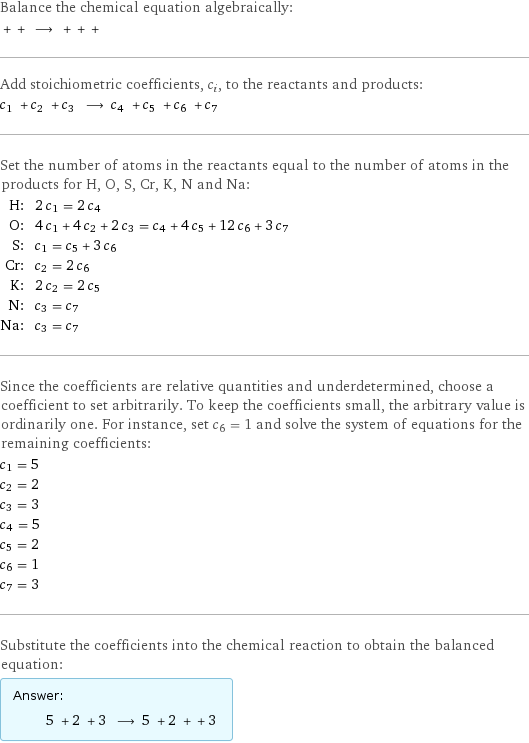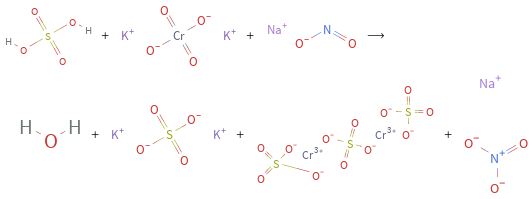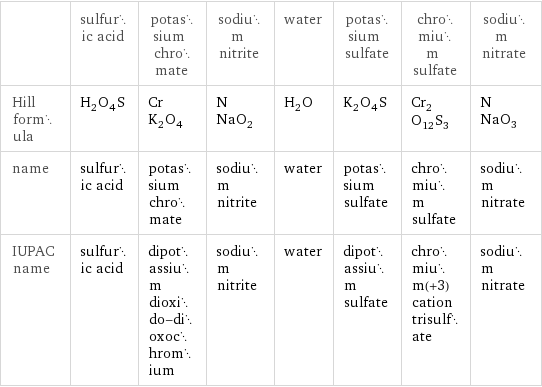Input interpretation

sulfuric acid + potassium chromate + sodium nitrite ⟶ water + potassium sulfate + chromium sulfate + sodium nitrate
Balanced equation

Balance the chemical equation algebraically: + + ⟶ + + + Add stoichiometric coefficients, c_i, to the reactants and products: c_1 + c_2 + c_3 ⟶ c_4 + c_5 + c_6 + c_7 Set the number of atoms in the reactants equal to the number of atoms in the products for H, O, S, Cr, K, N and Na: H: | 2 c_1 = 2 c_4 O: | 4 c_1 + 4 c_2 + 2 c_3 = c_4 + 4 c_5 + 12 c_6 + 3 c_7 S: | c_1 = c_5 + 3 c_6 Cr: | c_2 = 2 c_6 K: | 2 c_2 = 2 c_5 N: | c_3 = c_7 Na: | c_3 = c_7 Since the coefficients are relative quantities and underdetermined, choose a coefficient to set arbitrarily. To keep the coefficients small, the arbitrary value is ordinarily one. For instance, set c_6 = 1 and solve the system of equations for the remaining coefficients: c_1 = 5 c_2 = 2 c_3 = 3 c_4 = 5 c_5 = 2 c_6 = 1 c_7 = 3 Substitute the coefficients into the chemical reaction to obtain the balanced equation: Answer: | | 5 + 2 + 3 ⟶ 5 + 2 + + 3
Structures

+ + ⟶ + + +
Names

sulfuric acid + potassium chromate + sodium nitrite ⟶ water + potassium sulfate + chromium sulfate + sodium nitrate
Chemical names and formulas

| sulfuric acid | potassium chromate | sodium nitrite | water | potassium sulfate | chromium sulfate | sodium nitrate Hill formula | H_2O_4S | CrK_2O_4 | NNaO_2 | H_2O | K_2O_4S | Cr_2O_12S_3 | NNaO_3 name | sulfuric acid | potassium chromate | sodium nitrite | water | potassium sulfate | chromium sulfate | sodium nitrate IUPAC name | sulfuric acid | dipotassium dioxido-dioxochromium | sodium nitrite | water | dipotassium sulfate | chromium(+3) cation trisulfate | sodium nitrate